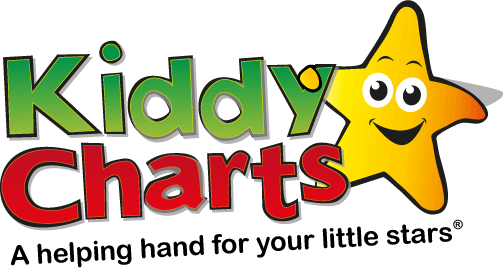So you’ve got your very own sticker chart from our site. But what do you do now!
I am sure you may even have tried the charts with your little one before. I often hear:
“Stickers charts don’t work with my kids.”
I tried them for a week but my kids got bored.”
There are things that can be done to make sure that sticker charts have ever chance of working with your kids. Try these ideas out first before you dismiss them as yet another fad.
As a parent, there are always challenging behaviours that you would really like to focus on tackling in your children. Sticker charts can make you feel like you are doing something positive, which is not bad thing in itself.
This feeling of positivity is particularly important when you have prised the kids apart for the millionth time, or spent an hour washing the No. 2 from your 3-year old’s Ben 10 pants.
Many of us have been there, done that.
So…here are my suggestions to help give your sticker charts a fighting chance.
1. Be Consistent
Just like everything in parenting, you need to try to be consistent in your use of the chart. Have clear ideas what it will be used for, and how success will be measured for each behaviour. For potty training, make it clear you get a sticker on the chart each time you wee in the potty, or perhaps if there are no accidents in a day. Or if you little one is just starting, a number you think is attainable. Whatever you decide for each behaviour, explain clearly to your child and stick with it.
2. Make it part of the routine
The main problem with using sticker charts is forgetting about them. For consistency’s sake it’s important the child interacts with the chart everyday. A simple way to achieve this is to add the chart into your routine. For example, before you read a bedtime story, take a look at the sticker chart with your child. If you are using it with a younger child, you will need to do the sticker there and then as otherwise they won’t understand. Younger toddlers don’t understand delayed rewards.
3. Choose rewards that are personalised to you
Some children are happy with colouring in a picture, some prefer a sticker, and some are content with a tumble session with their carer, or a toy from the local charity shop. You know your child the best, and are able to work out what would work well to motivate them.
4. Try not to overwhelm your child with too many behaviours
Bear in mind the age of the child when you decide what behaviours to put on your chart. Younger children can only cope with one or two at a time. Some older children can do more, but again use your judgement to determine wat’s best for your child and work from there. Every child is different, so each chart will be different too.
5. Keep the sticker chart fresh and relevant
So you have used a chart for about 4-6 weeks, which is about the time it takes to address a behaviour, and its worked. Now decide now your child is interacting with the chart. If it’s still working, you can refresh the chart. However, perhaps you feel it’s better to take a break. Of you do, leave the chart, and come back to it some other time.
Perhaps in a few weeks you can address another challenging behaviour? Change the behaviour, change the backgrounds, and possibly the rewards if you are going down that route; all in discussion with your kids. This way, each chart is different every time, and is more likely to engage them.
Do you have any top tips for using sticker charts? If you do, we would love to hear from you.

